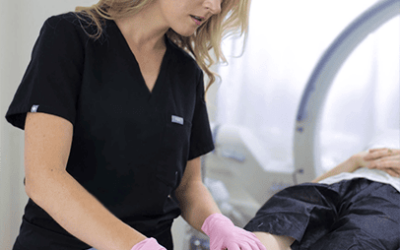If you’re suffering from painful, bulging veins and considering medical help, you may ask, “Are varicose veins covered by insurance?” This is a common and important question for many Americans who want relief but are also budget-conscious. The answer largely depends on your specific health insurance policy and whether your treatment is deemed medically necessary or cosmetic.
In general, insurance providers do cover varicose vein treatments when they are medically required. If you have symptoms such as swelling, leg pain, skin discoloration, venous ulcers, or blood clots, your doctor may diagnose the condition as chronic venous insufficiency (CVI). In such cases, treatment is not merely cosmetic—it’s necessary for your health and quality of life.
However, if you are pursuing vein treatment purely for aesthetic reasons—such as to improve the look of your legs—then most insurance companies consider the procedure cosmetic and deny coverage. Understanding this distinction is key to planning your treatment and financial responsibility.
Table of Contents
When Do Insurance Companies Cover Vein Treatment?
The question “Are varicose veins covered by insurance?” often depends on whether the condition is causing functional impairment. Here’s how insurance companies usually decide:
- Documented Symptoms
If you experience leg heaviness, aching, itching, or burning, and these symptoms are consistent and progressive, your doctor may classify the condition as medically necessary. - Diagnostic Ultrasound
Most vein treatment clinics perform a duplex ultrasound to assess blood flow. If the ultrasound reveals poor venous circulation or reflux, this is strong evidence for medical necessity. - Conservative Treatment First
Insurance plans usually require patients to try conservative treatments—such as wearing compression stockings—for 6 to 12 weeks before they will approve more advanced options like endovenous laser ablation or sclerotherapy. - Worsening Symptoms or Complications
If varicose veins are causing skin ulcers, bleeding, or blood clots, insurance coverage is typically granted because these complications can lead to serious medical issues if left untreated.
What Procedures Are Usually Covered?
If your vein condition is medically necessary, insurance may cover a variety of treatments offered at your local vein treatment clinic, including:
- Endovenous Laser Treatment (EVLT)
This minimally invasive procedure uses laser energy to close off problematic veins. EVLT is widely accepted by insurers when clinical evidence supports it. - Radiofrequency Ablation (RFA)
Similar to EVLT, this treatment uses radiofrequency energy to seal off faulty veins. It’s considered safe and effective and is often reimbursed. - Sclerotherapy (when medically necessary)
Though often thought of as a cosmetic treatment, ultrasound-guided sclerotherapy is sometimes approved when it treats deeper, problematic veins. - Phlebectomy
This surgical procedure involves removing the diseased vein through small incisions. It’s typically covered when conservative treatments fail. - Ultrasound Diagnostic Tests
Most insurance providers will cover the cost of ultrasounds if they are used to assess the severity and functionality of your veins.
When Is Varicose Vein Treatment Considered Cosmetic?
If you ask, “Are varicose veins covered by insurance?” but your only concern is appearance, then the answer might be no. For example:
- If you have no pain, swelling, or skin issues, insurance companies often label the treatment as elective cosmetic surgery.
- If your vein concerns are limited to spider veins (tiny, thread-like veins that don’t cause discomfort), the treatment is typically not covered.
In such cases, patients must pay out of pocket, which can range from $300 to $500 per session of sclerotherapy, depending on your vein treatment clinic and location.
What Can You Do to Increase Insurance Approval?
- Start with a Consultation
Visit a certified vein treatment clinic and undergo a thorough evaluation. Ensure the clinic documents your symptoms and treatment history. - Follow Conservative Treatment Plans
Adhering to the use of compression stockings or elevation techniques demonstrates a good-faith effort to manage your condition without invasive procedures. - Document Symptoms and Lifestyle Impact
Keep a diary of your symptoms. Note how your varicose veins affect your work, mobility, or sleep. The more medical necessity you can demonstrate, the better. - Get a Referral
Some insurance plans require a referral from a primary care physician before they authorize treatment from a vein specialist.
Why Choose a Vein Treatment Clinic?
A dedicated vein treatment clinic offers specialized care with trained vascular specialists, ensuring both medical accuracy and optimal outcomes. These clinics typically:
- Provide detailed insurance verification services
- Perform non-invasive diagnostics like ultrasounds in-house
- Offer a range of treatment options based on medical need
- Have experience in insurance pre-authorization processes
Choosing a clinic with insurance experience can save you time and stress, especially when navigating the complexities of coverage versus out-of-pocket procedures.
Understanding Costs Without Insurance Coverage
If your treatment is not covered, it’s wise to ask your vein treatment clinic about financing options. Many offer:
- Payment plans
- Discounts for cash payments
- Medical credit programs like CareCredit
On average, cosmetic vein treatments can cost anywhere from $300 to $3,000, depending on the number of sessions, severity of the vein issue, and the location of the clinic.
Summary: Is Insurance Likely to Help?
So, are varicose veins covered by insurance? Yes—if the condition is symptomatic and medically necessary. Treatment options that improve health, prevent complications, and address serious symptoms are commonly approved by most providers. On the other hand, cosmetic procedures for vein appearance alone are usually excluded from coverage.
The best way to proceed is to consult with a professional vein treatment clinic. They will evaluate your specific condition, guide you through diagnostic steps, and help determine what your insurance will cover. In the end, understanding the fine print of your policy and working with the right healthcare team ensures you get the care you need—medically and financially.

